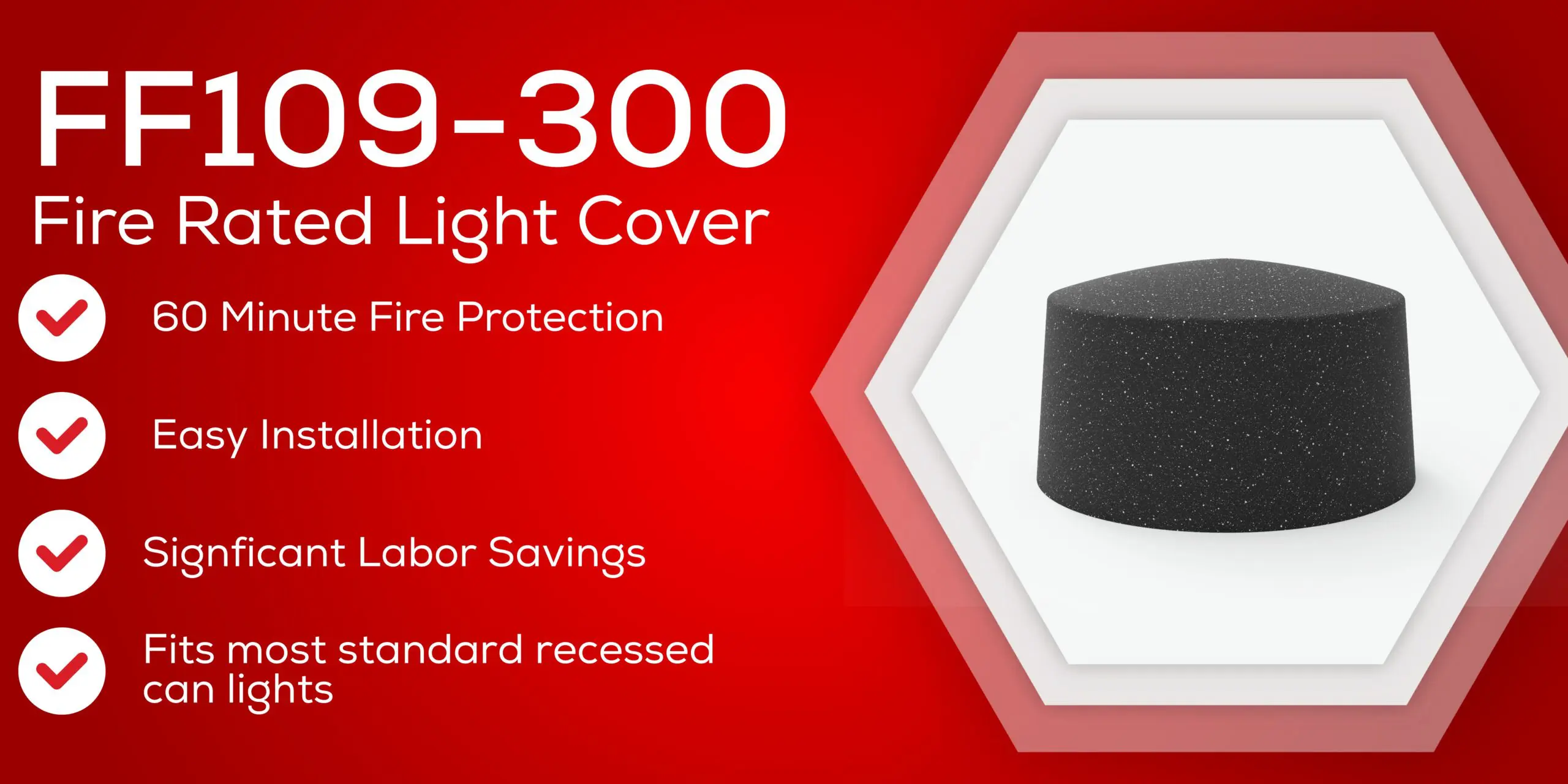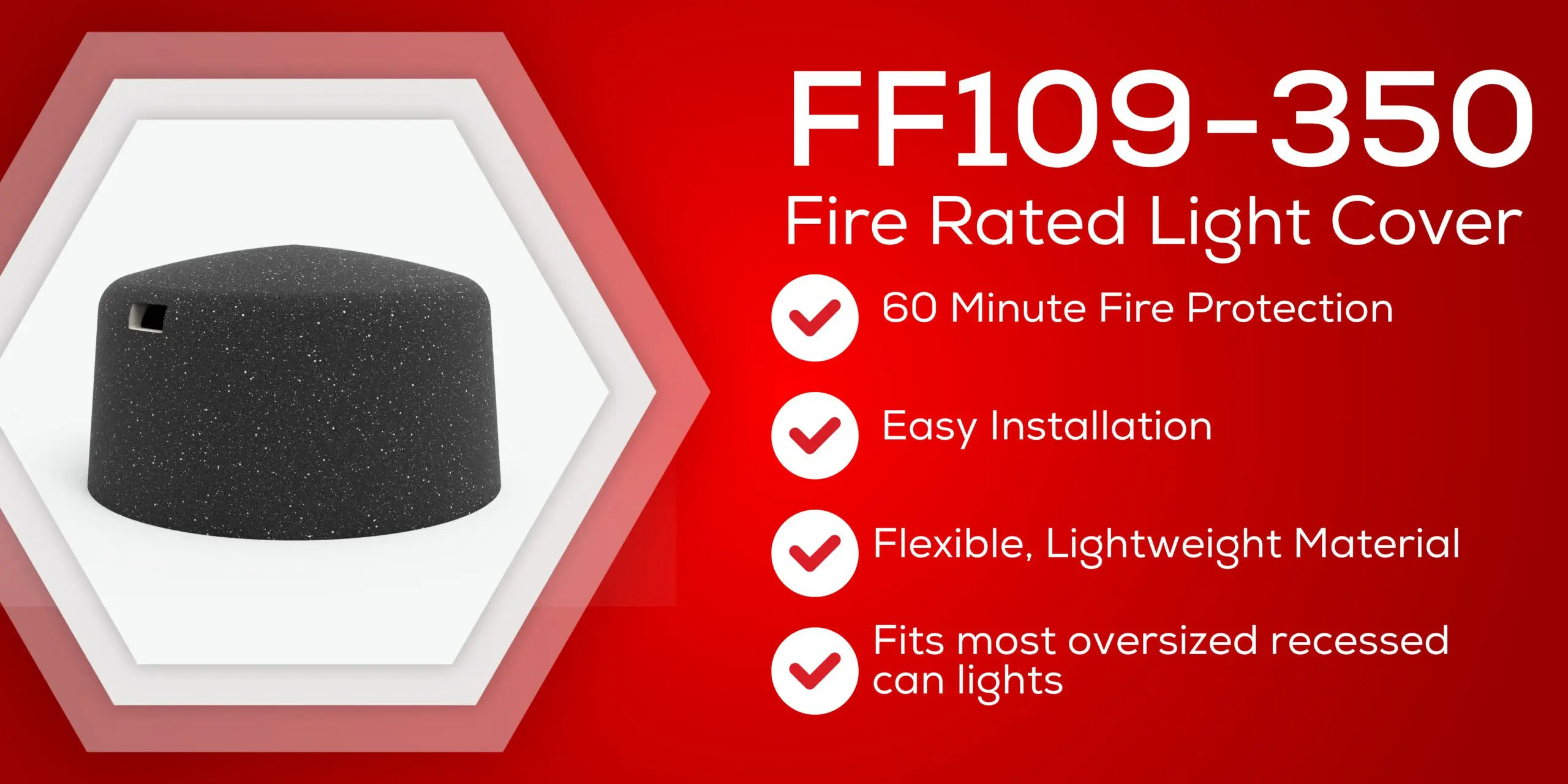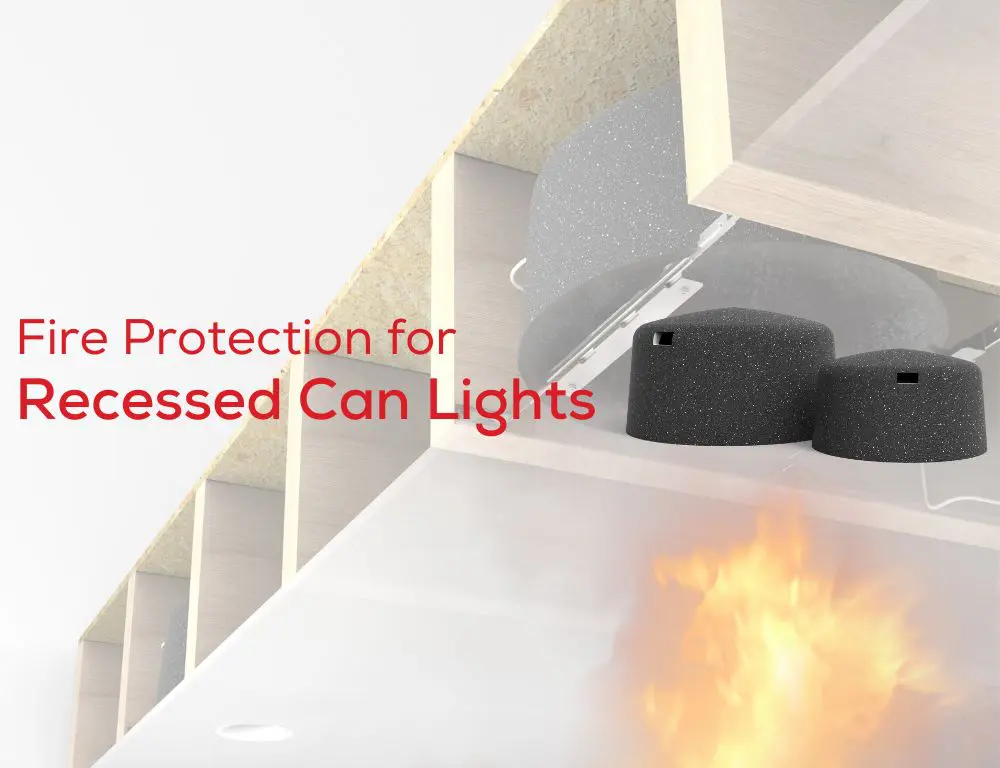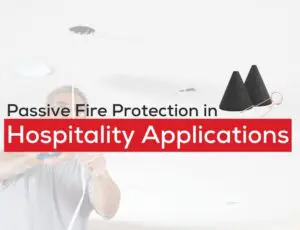Discover why unprotected recessed can lights require passive fire protection solutions in multi-family homes.
Life Safety – the main catalyst for the rapid adoption in passive fire protection solutions and materials in the construction landscape. From through-penetration openings to ventilated air cavities, passive fire protection is required in a multitude of applications, environments, structures, and practices.
With the rapid expansion of this demand, passive fire protection specialists, such as Tenmat, have been put to the test in their ability to create the latest innovations in passive fire protection technology while simultaneously meeting the latest in construction practices. Unfortunately, the ever-changing landscape has “dimmed the lights” on certain passive fire protection solutions that aren’t related to the latest building code adoptions. So, let’s get back to the basics – unprotected ceiling openings caused by recessed can lights.
The Origin of Life Safety – Recessed Can Lights
Recessed can lights are commonly installed into the ceilings of both residential and commercial buildings. Often, ceiling/floor assemblies of multi-level buildings must comply with stringent fire regulations, and when necessary, the construction should be fire-rated. But, why?
When recessed lights are specified into these assemblies, the installation of these fixtures creates an unprotected opening. In the event of a fire, the fixture melts aways in minutes. With this opening, heat, smoke, and flames have immediate access to travel from room to room, level to level.
To protect the lives and properties within our communities, the International Building Code addressed in section 714.5.2 of the 2018 IBC:
“Where floor/ceiling assemblies are required to have a fire-resistance rating, recessed fixtures shall be installed such that the required fire resistance will not be reduced.”
With this issue addressed, construction professionals are required to implement appropriate levels of fire protection – especially within ceiling assemblies. Please review the list below of the common applications where these standards may arise:
- Multifamily Communities
- Healthcare Facilities
- Assisted Living and Rehabilitation Centers
- Pre-K and Elementary Schools
- Jr/Sr High Schools
- Higher-Education Institutions
- Student Housing
- Mixed-Use Buildings
The Threats of Tradition
With the newfound demand for a passive fire protection solution and its non-existence, the race to formulate a proper solution commenced. Resulting from this demand, one of the first forms of passive fire protection originated – self-made boxes made out of Type X sheetrock.
Known for its cheap material cost, traditional drywall boxes were ideal to use when resolving the compromised ceilings. However, these solutions had major flaws with their improper fire ratings and costly labor expenses.
For this reason, fire-rated lighting fixtures were introduced. With their ability to fulfill lighting demands and fire protection standards, fire-rated recessed can lights were an optimal solution for both general contractors and electrical contractors. Often, the material costs of a fire-rated light remain at the higher end – not ideal for projects, who have strict budgets.
Due to this, contractors, architects, and developers were still seeking a fire-rated solution, where the solution can fully meet all the following demands:
- Stringent Building Code Standards
- Easy Installation Steps
- Cost-Efficient
In response, Tenmat developed our line of Fire-Rated Covers – specifically formulated for recessed can lights.
Progression in Protection
Composed of intumescent material, Tenmat introduced the FF109-300, and FF109-350 Fire Rated Recessed Light Covers. With its intumescent composition, the cover allows for 60 minutes of protection from heat, flames, and smoke – allowing for additional evacuation time for the building’s occupants. Another added benefit of using intumescent technology is its flexible and lightweight composure. With the ability to be easily installed, our Fire-Rated Solutions have proven to provide significant labor savings, unlike traditional passive fire protection solutions.
Our Fire-Rated Recessed Can Light Covers are able to be paired with a variety of recessed cans, regardless of make and/or model. With this feature, contractors can easily install these solutions into ceiling assemblies, while meeting the overall building’s aesthetics.


To learn more about these products, please visit the following pages:
FF109-300 Fire Rated Recessed Light Cover
FF109-350 Fire Rated Recessed Light Cover
Conclusion
In conclusion, ensuring the safety and integrity of multi-family homes and other structures with recessed lighting is important. The evolution of passive fire protection for recessed cans, such as Tenmat’s Fire-Rated Recessed Light Covers, highlights the importance of addressing unprotected ceiling openings. By integrating advanced intumescent solutions and materials, construction professionals can significantly enhance fire protection, providing crucial evacuation time. As we continue to innovate and adhere to developing building codes, we must remember that the goal is to protect the lives and properties within our communities. Get Active About Passive Fire Protection – Specify Tenmat.





